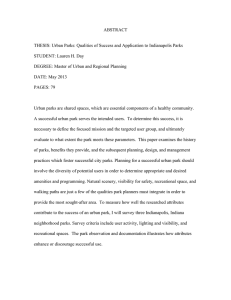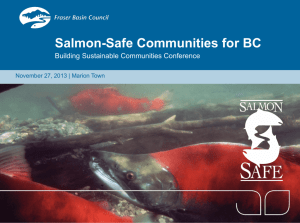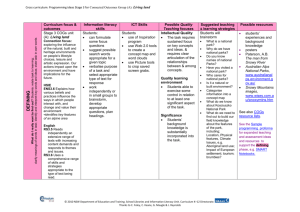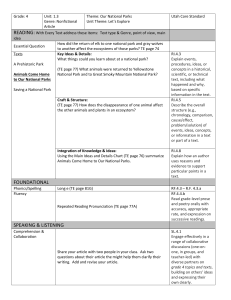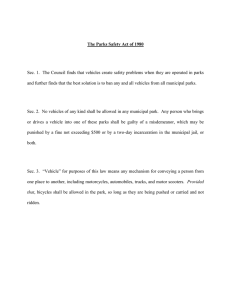FUNDING FOR STATE PARKS T Evaluating New Approaches to Increase
advertisement
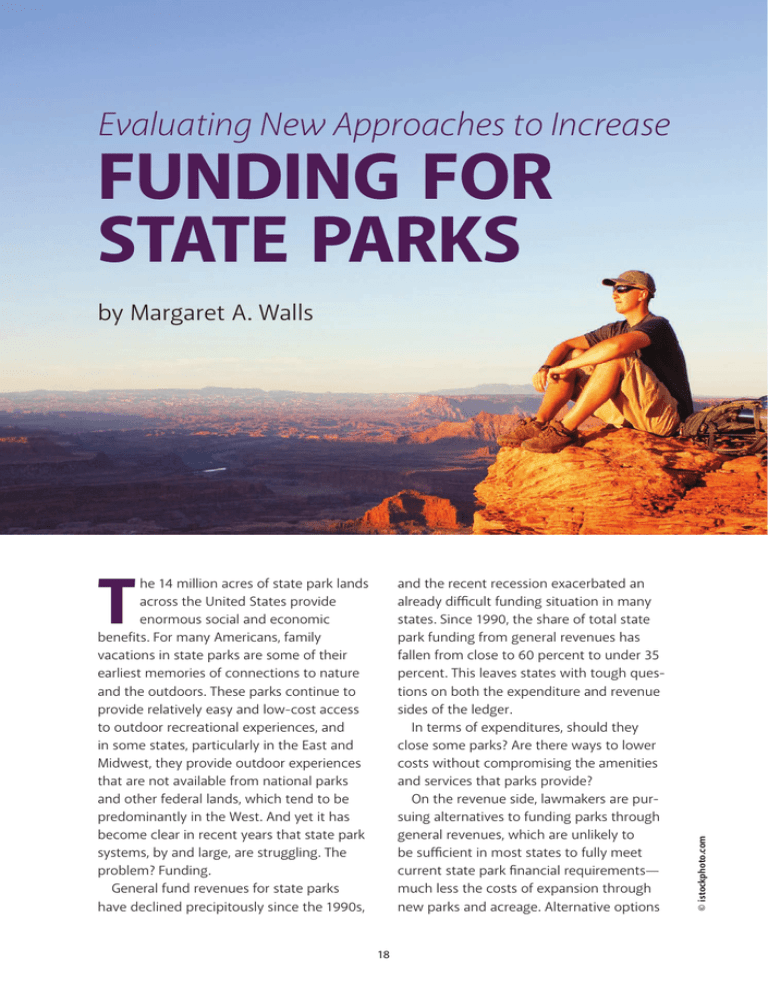
Evaluating New Approaches to Increase FUNDING FOR STATE PARKS T he 14 million acres of state park lands across the United States provide enormous social and economic benefits. For many Americans, family vacations in state parks are some of their earliest memories of connections to nature and the outdoors. These parks continue to provide relatively easy and low-cost access to outdoor recreational experiences, and in some states, particularly in the East and Midwest, they provide outdoor experiences that are not available from national parks and other federal lands, which tend to be predominantly in the West. And yet it has become clear in recent years that state park systems, by and large, are struggling. The problem? Funding. General fund revenues for state parks have declined precipitously since the 1990s, and the recent recession exacerbated an already difficult funding situation in many states. Since 1990, the share of total state park funding from general revenues has fallen from close to 60 percent to under 35 percent. This leaves states with tough questions on both the expenditure and revenue sides of the ledger. In terms of expenditures, should they close some parks? Are there ways to lower costs without compromising the amenities and services that parks provide? On the revenue side, lawmakers are pursuing alternatives to funding parks through general revenues, which are unlikely to be sufficient in most states to fully meet current state park financial requirements— much less the costs of expansion through new parks and acreage. Alternative options 18 © istockphoto.com by Margaret A. Walls include user fees, various kinds of dedicated taxes and other revenue sources, voluntary contributions, corporate sponsorships, and partnership arrangements—with local governments, park conservancies and foundations, and private industry. Which options hold the most promise? In truth, the diversity of park systems across the 50 states and variation in the degree of severity of their funding problems means that no single approach can be recommended. Each has advantages and disadvantages. »» User fees: Fees are appropriate for many of the services that parks offer, such as overnight campground stays, lodging, and equipment rentals. Fees are also an effective way to manage congestion. But overreliance nues, sales taxes, real estate fees, vehicle registration fees, and other sources. These “earmarked” taxes can give state park systems a reliable source of funds, but they nearly always lead state legislatures to cut back general fund revenues, sometimes to zero. And some earmarked taxes, especially those with a narrow tax base, are unlikely to generate substantial revenues. Having a broad tax base is also important to ensure that the burden on individual households is small. »» Voluntary private contributions: Following the lead of many major cities, such as New York, some states are increasing their efforts to attract philanthropic gifts. State park endowment funds hold particular promise. However, raising funds from Since 1990, the share of total state park funding from general revenues has fallen from close to 60 percent to under 35 percent. This leaves states with tough questions on both the expenditure and revenue sides of the ledger. on fees can sometimes inefficiently ration park use. And many aspects of parks, such as hiking and biking trails and scenic views, are nonrival public goods that should not be priced. »» Privatization: Contracting with private firms can inject new ideas and creativity into the management of parks and may yield cost savings through private-sector efficiencies. However, contracting can be costly. State park agencies need to carefully weigh the full cost of the contract approach— which includes the government’s cost of writing and enforcing the contract—with that of public provision. »» Dedicated public funds: There has been a recent move toward dedicated public funding systems that rely on lottery reve- donations can be costly and somewhat unreliable, so even in a best-case scenario, philanthropy is unlikely to provide the majority of funds for state park operations. In most states, the current funding model is not working. Fresh approaches to financing and managing parks and open space are needed. As legislators examine their options, it will be helpful to also keep in mind that state park problems often go beyond money. Some park systems have not kept up with changing demographics and preferences, and management structures in some systems seem to stifle creativity and innovation. Improving the financial viability of state park systems is a necessary step, one that belongs in the context of widerranging reforms. 19
